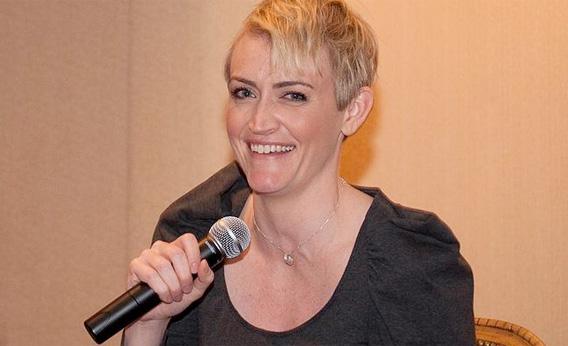Earlier this month, Heather Armstrong announced on her popular blog, Dooce, that she and her husband, Jon, were separating after a decade of marriage. The announcement itself was muted and seemingly unremarkable in a world where women regularly put videos of themselves taking pregnancy tests on YouTube. That didn’t stop Armstrong’s news from getting coverage from websites, Armstrong’s local Salt Lake City media, and even ABC News. After all, Armstrong has been dubbed the “Queen of the Mommy Bloggers” by the New York Times (Dooce attracts about 100,000 readers a day), so it’s not surprising that her devoted readership would have feelings about her separation.
But the tone of the response has been extraordinary in its relative kindness. We think of Internet commentary—especially toward women who write about their personal lives—as full of vindictive bile. Certainly, Armstrong is not immune from such cruelty, and some bloggers are taking her to task for making her every move so public. However, most of the response to Armstrong’s split has been concerned and sweet. Laura McKenna, who runs the personal blog Apt. 11D, called Armstrong’s post about her separation “The saddest thing I’ve read today.” Even commenters on Get Off My Internets, a website that exists solely to mock Internet celebrities, were upset by Armstrong’s separation. A usually caustic commenter with the apt handle “Judgey McJudgerson” shows how the normally snarky have been sensitive to Dooce, writing, “They’ve always seemed like a good couple, and I’ve always admired the fact that they actually WORK on their relationship because that shit doesn’t seem easy.”
There are a few reasons why notoriously cruel Web commenters are retracting their claws when it comes to Armstrong’s recent woes. For one, they admire her honesty when it comes to battling mental illness—over the years she’s been extremely candid about her hospitalization for post-partum depression. Her regular readers are genuinely concerned about her health. (Armstrong posted about suicidal ideation late last year.)
Further, many of them may subconsciously consider Armstrong a friend. After all, she has been posting to Dooce for more than a decade, making readers feel as invested in her life as they would someone they actually know. Anita Blanchard, an associate professor of psychology and organization science at UNC-Charlotte, has researched the sense of “virtual communities.” In a post about her own reaction to Armstrong’s separation, she says that because Armstrong has been so unusually candid with her readers: “1) Dooce is stored in the ‘friend’ section in the conceptual map of our social networks, even though we don’t know her. 2) When something unusual happens to her, at least some of us feel the need to sensemake [sic] about her experience with ‘real life’ others.”
That Armstrong’s longtime readers consider her a peer is key to their sympathy. From the portrait Armstrong painted, they seemed to be living the ur-egalitarian modern marriage. She and her husband lived and worked together on a creative endeavor, as Jon managed the tech and advertising side of the Dooce website. According to that Times Magazine profile of Armstrong from 2011, the site generates an estimated $1 million per year in ad revenue alone.
So this endeavor supported her family in luxurious style, but it still allowed them to have a wonderfully flexible life; they could get all the fulfilling, lucrative work done and still pick their kids up from school every day. Many of her readers want and appreciate what she appeared to have—a thriving home business with a “[l]over, business partner, best friend,” which is how Armstrong described Jon three years ago. Her marriage seemed aspirational, yet attainable—particularly because their lives weren’t entirely perfect, given Armstrong’s depression and anxiety, and her husband’s own mental health issues.
It’s precisely because of this notional attainability that Armstrong’s separation is so jarring for her readers. Fans of Seal and Heidi Klum might be sad about their split, but I doubt many of them could imagine themselves in the shoes of an uber-wealthy Teutonic supermodel. But plenty of Armstrong’s readers would love a companionate marriage that meshed work and life seamlessly, and her separation may dash those dreams. As one commenter put it, “If those rich, successful, equally attractive people can’t make it work, what chance do the rest of us have?” That ideal-seeming work/life combination is already gone, as Armstrong has asked her husband to find work outside the family business as part of this split.
Certainly no one knows what really goes on in a marriage—even a marriage between two bloggers who seem to constantly reveal details of their personal life. Perhaps the conclusion we should be drawing from Armstrong’s separation is not that the egalitarian, companionate marriage is impossible, but that the writers who appear to be sharing the most about their inner selves are still putting on a show.
